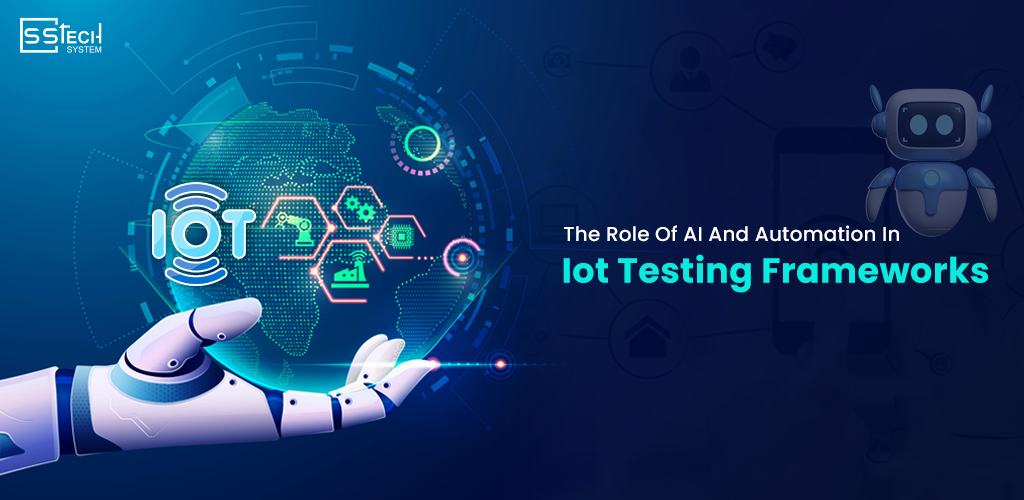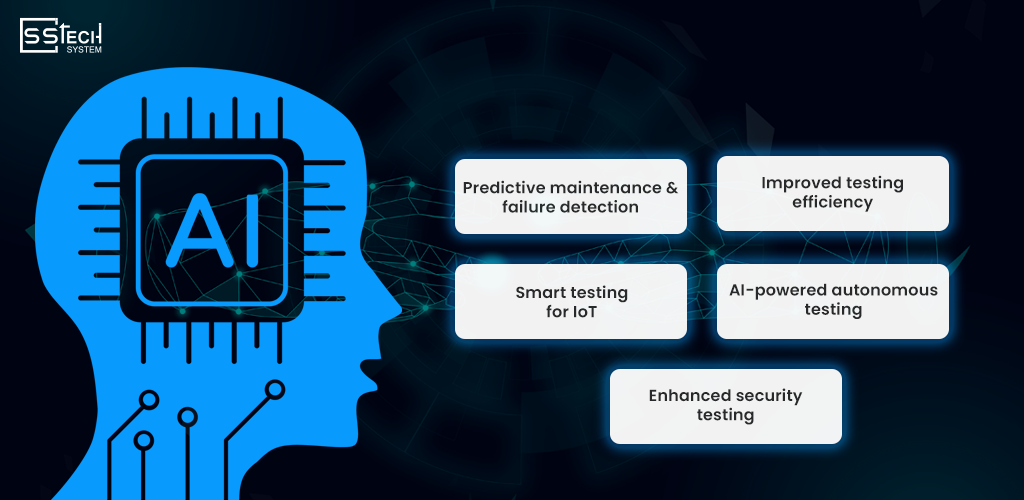
The billion-dollar growth of device connectivity under IoT Testing Frameworks requires a complete focus on functionality security and performance testing. Organizations should develop advanced testing structures that address varied network infrastructure and numerous devices and instant information transfer systems because IoT devices increase at a rapid rate.
These frameworks achieve better reliability coupled with performance improvement through the integration of AI automation and testing systems that also offer scalability advantages. The adoption of progressive testing solutions requires organizations to implement blockchain integration for IoT security testing in combination with both 5G-enabled IoT testing and edge AI for real-time IoT testing because emerging technology trends exist.
The article examines how AI automated systems enable contemporary IoT testing frameworks to reshape both IoT application development along with deployment methods. This article demonstrates how businesses achieve safe smart IoT solutions through detailed examinations of advanced framework security methods and AI-based anomaly detection systems.
What are IoT Testing Frameworks?
The IoT testing framework represents an organized approach that verifies the correct operation of systems connecting diverse elements of devices alongside their networks and platforms.
Multiple aspects of IoT testing get covered through the operational plural of these frameworks which examine both performance and functionality alongside security and interoperability and usability aspects. Such frameworks need to adjust their operations between changing data environments as well as multiple hardware and software platforms in the extensive IoT sensor network.
IoT security frameworks remain essential due to increasing global security issues that affect present-day operations. The global IoT testing market was valued at $1.9 billion in 2022 and is projected to reach $30.4 billion by 2032, growing at a CAGR of 32.6% from 2023 to 2032.
These frameworks determine weak points in systems before they are ready to combat cyber security threats. Australian regulatory requirements together with protective standards have made IoT security testing in Australia a priority issue.
The latest IoT standards and frameworks purposefully create a framework for simple connection with security testing solutions such as blockchain integration for IoT security testing and digital twin technology for IoT testing. Such systems allow stakeholders to build virtual models that represent real-life situations to achieve higher accuracy alongside operational improvements in testing.
The integration testing frameworks work to guarantee uninterrupted functioning between all components of IoT systems starting from sensors and ending at applications. Systems requiring multiple-device and network communication need to create secure connections because this stands as their essential fundamental requirement.
The Role of AI in IoT Testing Frameworks
Artificial intelligence within Internet of Things test frameworks brought substantial operational changes to testing activities performed by organizations. Large data streams from IoT devices go through AI algorithms for detecting patterns alongside anomalous activity that exceeds human tester abilities.
AI-powered autonomous testing systems stand crucially important because they help identify failures that could occur ahead of time. The predictive qualities of these tools become essential for industrial IoT purposes because system breakdowns generate major financial problems.
Through AI-driven anomaly detection in IoT systems organizations are better able to enhance security operations as the system can spot abnormal device behavior that often signals cyber security breaches or device malfunctions.
The growth of AI development in Australia brought AI-powered IoT testing improvements to the Australian market where businesses now deploy intelligent automation for superior results. The technology of Edge AI for real-time IoT testing enables data operations on local devices instead of cloud resources for fast and efficient real-time testing purposes.
When AI combines with machine learning in IoT testing these systems develop dynamically because they acquire knowledge from past tests to boost their accuracy and efficiency in an ongoing process. Through this method both testing framework quality and product release speed increase dramatically.
How AI Improves IoT Testing Frameworks

The integration of AI within IoT testing frameworks produces enhancements that boost efficiency together with quality levels of testing processes:
1. Predictive maintenance and failure detection
Through predictive analytics, AI technology helps IoT systems detect hardware process failures together with network disturbances prior to their actual occurrence. The global predictive maintenance market size was valued at USD 10.93 billion in 2024 and is projected to grow from USD 13.65 billion in 2025. Imposed in advance this prevention strategy minimizes operational delays while simultaneously decreasing maintenance expenses for large-scale implementations.
2. AI-powered autonomous testing
The combination of artificial intelligence enables businesses to perform automated tests which generate tests and conduct both test runs and assessments. Mobile application development organizations benefit from this approach because it enables them to perform uniform tests on all devices and operating systems which includes their work in both iOS app development and Android app development.
3. Enhanced security testing
Security threats become easy to detect in early stages by utilizing AI-driven anomaly detection in IoT systems which reduces potential security damage. AI serves as an essential security element for today’s IoT systems since it provides real-time detection of both unauthorized access attempts along with unusual patterns.
4. Improved testing efficiency
The prioritization of high-risk testing areas through AI leads to faster test cycles along with reduced efforts spent on superfluous evaluations. AI creates significant value for IoT automation testing and 5G-enabled IoT testing companies because rapid feedback plays an integral role in these specific fields.
5. Smart testing for IoT
AI-powered testing frameworks use smart decision systems that enable smart testing for IoT to change its behavior effectively according to transformations in testing environments. Such testing approach enables thorough evaluation of IoT systems while operating in authentic situations.
The Role of Automation in IoT Testing Frameworks
Modern IoT testing frameworks depend heavily on automation because it ensures rapid test execution and provides consistency and scalability to achieve better testing speed. The massive quantity of data from IoT devices becomes efficient through automated systems which reduces time-consuming and error-prone manual tasks.
The implementation of IoT automation testing enables developers to tackle complex problems while the system automatically performs repeated tests. Organizations need the automated device testing tool for their multi-device environments since this tool enables uniform testing across various platforms and devices.
During Internet of things testing, automation enables designers to obtain quick feedback loops which speeds up their ability to find and fix problems. Businesses working in IoT application development along with mobile application development services find special value in this approach.
The testing process implemented by IT support & maintenance services companies ensures complete assessment of system upgrades before release so they deliver better reliability alongside reduced downtime.
The integration of automation permits seamless unification between various IoT components by using standardized IoT frameworks. The integration stands essential for businesses implementing blockchain integration for IoT security testing and guarantees secure communication among all the components.
Automation enhances digital twin technology for IoT testing because it enables the real-time observation and simulation of physical assets which leads to improved testing accuracy and better insights.
Conclusion
Businesses now implement modern IoT testing frameworks through AI and automated components to transform their assessment approach in a connected economy. The combination of artificial intelligence and automation provides testing frameworks with smart capabilities along with adjustable performance and predictive functionality and automation delivers optimized consistency and scalable solutions. These two components form an interconnected ecosystem that guarantees IoT systems to function securely and reliably.
The technological advancements benefit businesses operating in IoT application development as well as mobile application development, iOS app development, android app development by improving their product quality. Organizations can sustain leadership in the digital competitive market by implementing AI-powered autonomous testing and edge AI for real-time IoT testing alongside 5G-enabled IoT testing.
Companies must integrate AI and automation into IoT testing as it becomes necessary to maintain their competitive position and market relevance and hire dedicated developers or expert UI/UX design services. SSTech System solutions alongside other companies drive IoT development and evaluation forward through their progressive integration of fresh solutions.
FAQs
1. What is an IoT testing framework?
The IoT testing framework serves as an organized approach that verifies both the operational effectiveness and PLOYability and transparency characteristics of IoT system architectures. The framework enables verification of devices and their operational capabilities as well as connection strength and information reliability when operating on different platforms and networks.
2. How does AI enhance IoT testing?
The implementation of artificial intelligence strengthens IoT testing frameworks by providing automated maintenance predictions and automated testing cycles and security anomaly detection and smart decision capabilities through machine learning.
3. What role does automation play in IoT testing?
Automating testing operations generates two key benefits by ensuring both improved efficiency in addition to increased testing scale. The system enables uniform device testing and platform execution which enhances fast reliable testing of IoT Automation systems.
4. Why is security important in IoT testing?
The essential nature of security becomes vital in IoT systems because extensive sensitive data flows between connected networks. Secure IoT security frameworks operate as a defense mechanism against cyber dangers to maintain the security stature of connected systems.
5. What are the benefits of AI-powered autonomous testing?
The automated system provided by AI-powered autonomous Testing performs test creation and analysis tasks alongside test execution while it cuts down on manual testing work for better testing speed. The detection speed increases while IoT systems gain greater reliability through this method.
6. How does blockchain enhance IoT security testing?
The integration of Blockchain with IoT Security Testing creates a decentralized system which ensures tamper-proof data security as well as integrity throughout IoT systems.
7. What is the significance of Edge AI in IoT testing?
Edge AI for Real-Time IoT Testing uses IoT device processing power to execute data while it improves real-time operations and decision-making.
8. How can businesses benefit from AI in software testing?
The benefits of AI in software testing include achieving faster executions while improving accuracy and providing predictive analytics and resource optimization which results in superior quality reliable software solutions.



